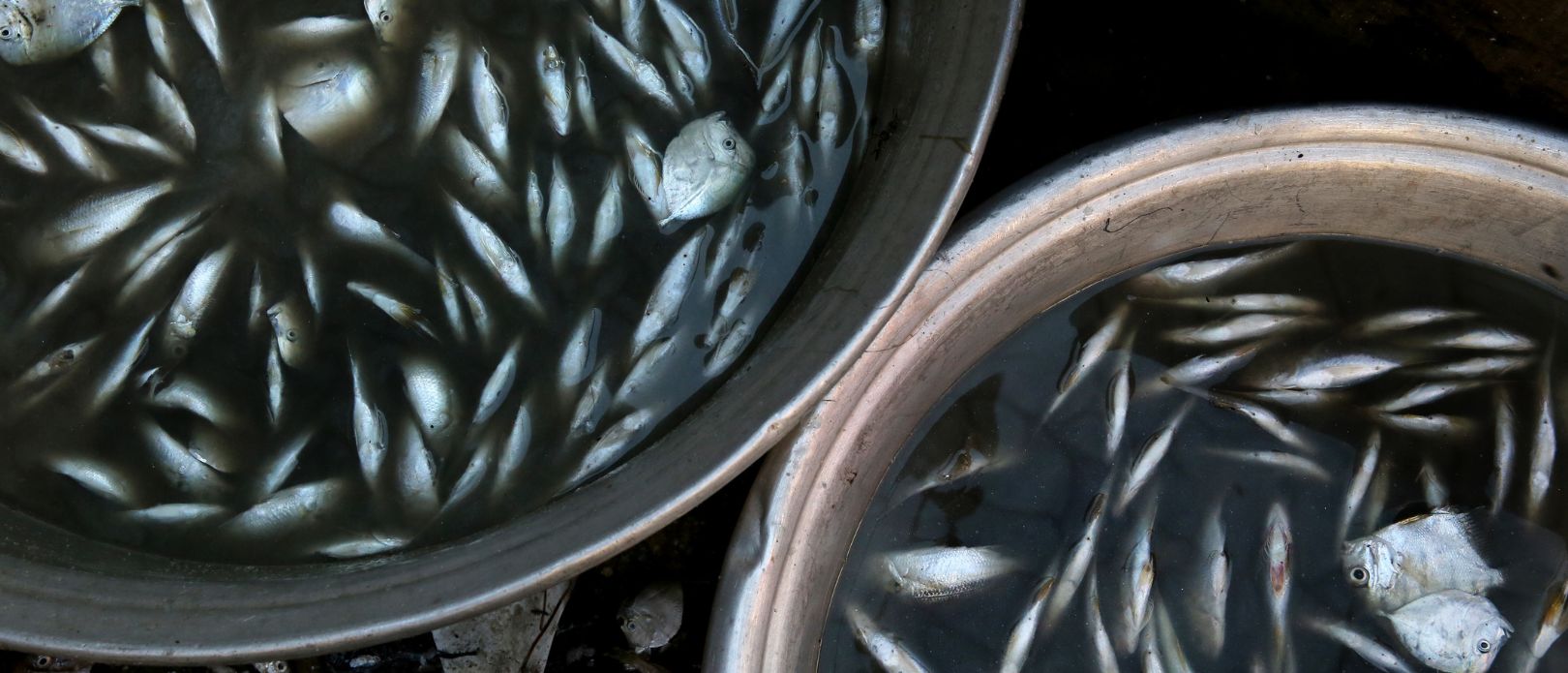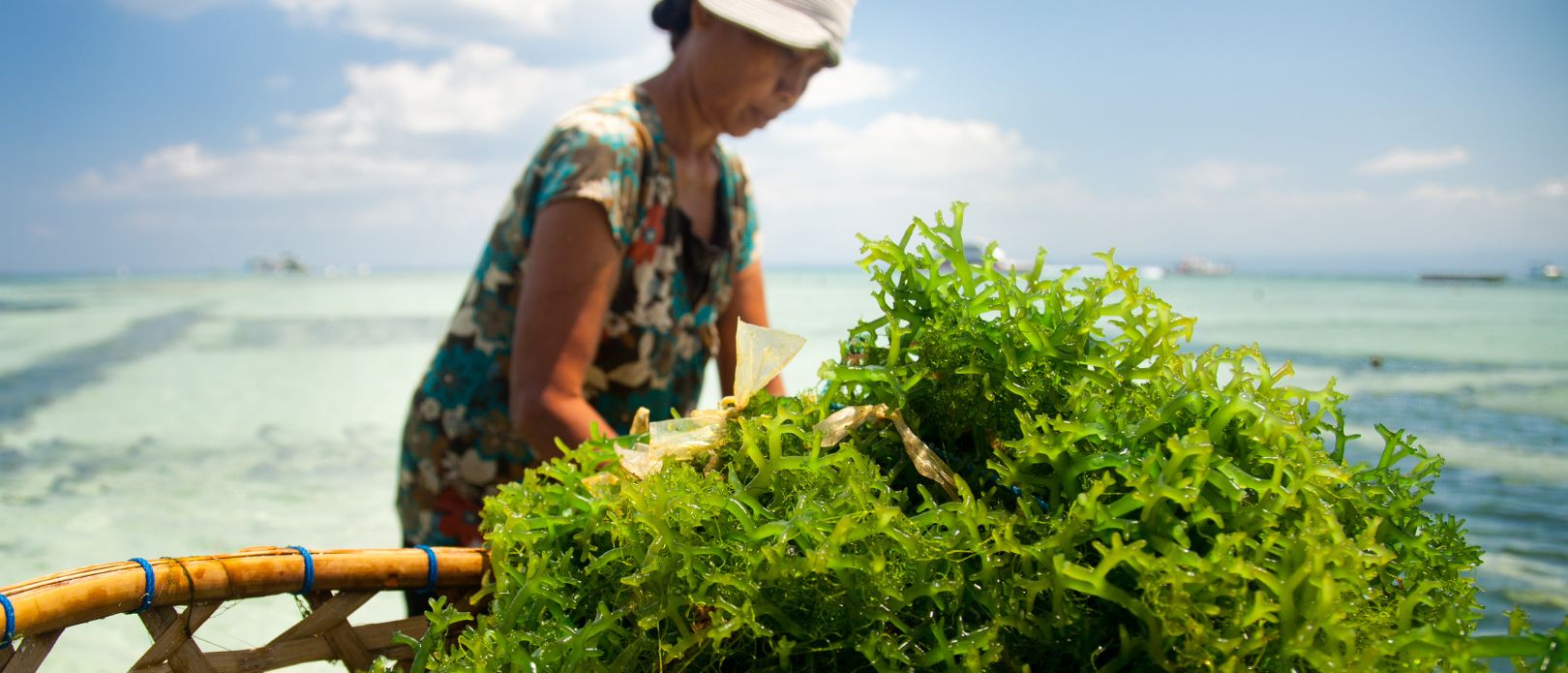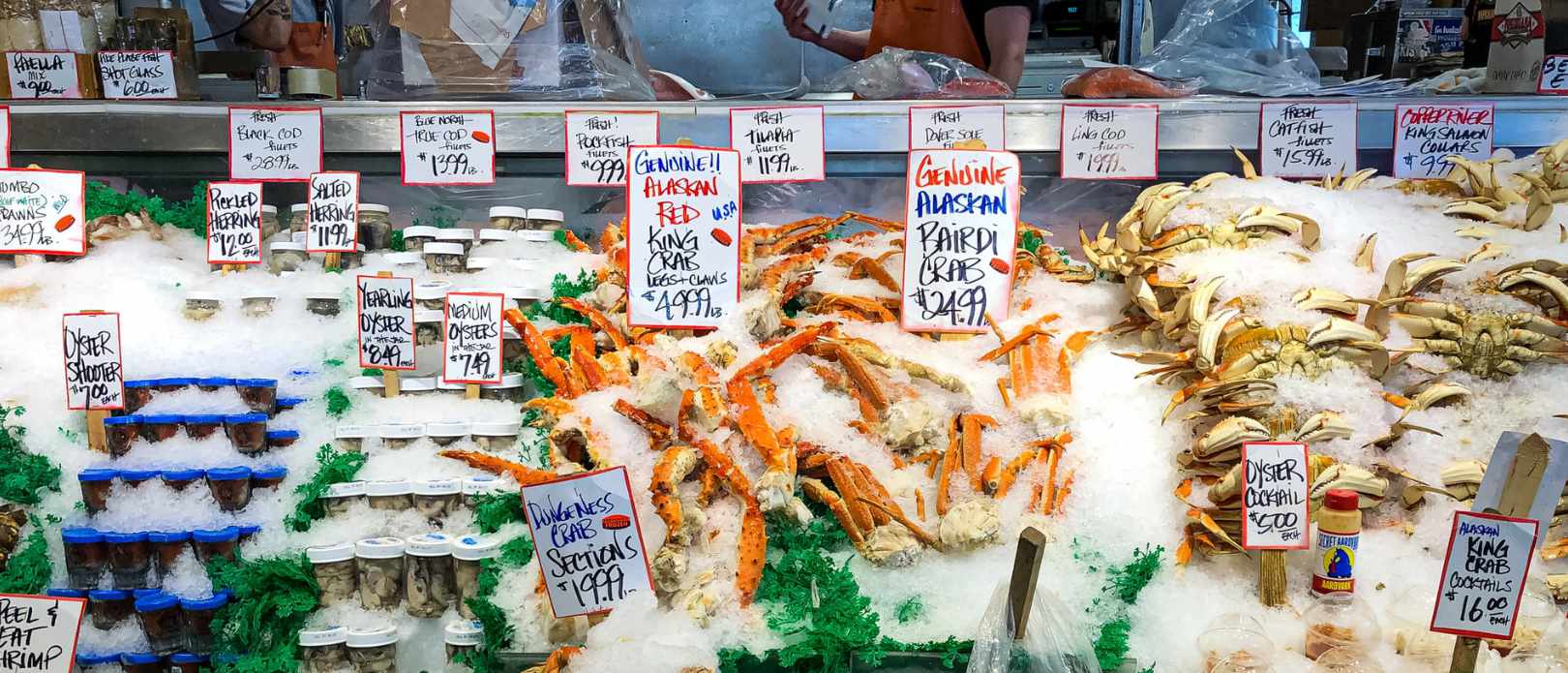Blue foods
Aquatic foods around the world face severe risks from environmental change, finds new research

Fish being washed in Jamestown Fishing Village in Accra, Ghana. Photo: Worldbank via Flickr (CC BY-NC-ND 2.0)
Aquatic foods are essential for global diets, but they are also vulnerable to environmental change. This vulnerability has been largely understudied, according to a new paper
- More than 90 per cent of global “blue” food production faces substantial risks from environmental change
- A total of 17 stressors were surveyed, including harmful algal blooms, sea level rise, changing temperatures, pesticide exposure, and more
- The authors argue that special attention should be paid to countries facing high exposure to environmental change yet not possessing the adequate capacity for adaptation
Human-induced environmental change puts many of the world’s largest aquatic food producers at risk, especially in Asia, Latin America and Africa.
This is the main finding of a new study by the Blue Food Assessment which was published in Nature Sustainability.
The study shows that more than 90 per cent of global “blue” food production, in both capture fisheries and aquaculture, faces substantial risks from environmental change, with several leading countries in Asia and the United States set to face the greatest threats to production.
Environmental change
The authors behind the new paper produced the first-ever global analysis of environmental stressors impacting the production quantity and safety of blue foods around the world, ranking countries according to their exposure to key stressors for the first time. A total of 17 stressors were surveyed, including harmful algal blooms, sea level rise, changing temperatures, pesticide exposure, and more.
“We have only scratched the surface in our understanding of how environmental stressors are connected, and how they can both negatively impact the production and safety of the resulting blue foods,” says Ling Cao, co-lead author from the State Key Laboratory of Marine Environmental Science at Xiamen University.
Stressors vary by country
Species invasion, inland eutrophication or the over-enrichment of water bodies with nutrients, ocean warming, and sea level rise were cited by the paper as the main threats to blue food production in the US, with freshwater and marine fisheries facing disproportionately large risks.
In addition to studying the direct effects from stressors, it is also important to broaden the scope and consider how supporting systems are impacted.
Max Troell, centre researcher and co-author
As the largest blue food producer, China’s freshwater aquaculture is also highly exposed to inland eutrophication and severe weather events, the research shows.
The authors also argue that special attention should be paid to countries facing high exposure to environmental change yet not possessing adequate capacity for adaptation, including Bangladesh, Benin, Eswatini, Guatemala, Honduras, Togo and Uganda.
“In addition to studying the direct effects from stressors, it is also important to broaden the scope and consider how supporting systems are impacted – for example, feed production systems providing inputs for aquaculture,” says centre researcher Max Troell, who co-authored the paper.
The research was conducted by the Blue Food Assessment which is an international joint initiative that brings together over one-hundred scientists from more than twenty-five institutions. It is led by Stockholm Resilience Centre, the Center for Ocean Solutions and the Center on Food Security and the Environment at Stanford University, and EAT.
Read "Vulnerability of blue foods to human-induced environmental change" »
Cao, L., Halpern, B.S., Troell, M., Short, R., Zeng, C., Jian, Z., Liu, Y., Zou, C., Liu, C., Liu, S., Liu, X., Cheung, W.W.L., Cottrell, R.S., DeClerck, F., Gelcich, S., Gephart, J.A., Godo-Solo, D., Ihilani Kaull, J., Micheli, F., Naylor, R.L., Payne, H.J., Selig, E.R., Sumaila, U.R. & Tigchelaar, M. 2023. Vulnerability of blue foods to human-induced environmental change. Nature Sustainability.








